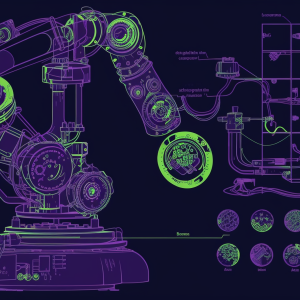The Least Boring Raspberry Pi course on the planet! What if you could turn your house into an automated home? Well, with this course you can!
Automation is becoming the norm in today’s world with a lot of companies focusing on providing better and smarter equipment for homes. Smarter TVs, fridges, speakers, locking systems, etc. With this course, you can learn how to tinker with your devices to make them smarter and not have to shell out thousands of extra dollars!
Our course has been designed for anyone who loves taking apart electronics and putting them back together. You don’t need to have any expertise, any newbie can join in and enjoy the fun!
This course is not just limited to learning about Raspberry Pi, but also extends to include the Internet of Things. We designed this course to stand apart from other Raspberry Pi courses, which turn out to become manuals or guides and instead made it a fun, hands-on activity based course to help you actually learn how to get started and actually get something done.
This course will help you progress from a newbie to an intermediate level, which means it will get you to a point where if you want to create a really cool IoT application, you will be able to figure out to implement it from scratch!
The main focus in this course is to automate your home using Raspberry Pi, so that you can turn the lights out without flipping any switches and even turn down the music without having to get off the couch.
The course has been designed to be fun, quirky and comes packed with a lot of examples! It also includes a peppy soundtrack and art, to make it more interesting and improve cognition.
The course will cover the following topics:
- Internet of Things: Sensors, Actuators, Microcontrollers, Arduino, Raspberry Pi, Physical Computing, Smart homes
- Raspberry Pi 2 Model B: Components, System on a Chip (SOC), Input Output Interfaces, SD Card / Secondary Storage, Choice of Operating Systems, RISC/CISC Architectures, x86 vs ARM, Raspbian OS installation, Raspbian tour, Linux Shell commands overview, Installing softwares, Connecting to the Internet
- Physical Computing: Sensors (Photoresistors, Ultrasonic sensors, motion sensors, temperature and humidity sensors), Relays, LEDs, Push buttons, Basics of circuit design, Ohm’s law, RC circuit, GPIO pins, Serial and Parallel interfaces, UART, SPI, I2C, Pulse Width Modulation (PWM), Python (RPi DOT GPIO), WiringPi, Node js (RPi-GPIO)
- Home Automation projects: Measuring Distance, Measuring Light Intensity, Controlling switches with sensors, Controlling switches over local and external networks.
So, what are you waiting for? Let’s start building your smart home!
–










There are no reviews yet.